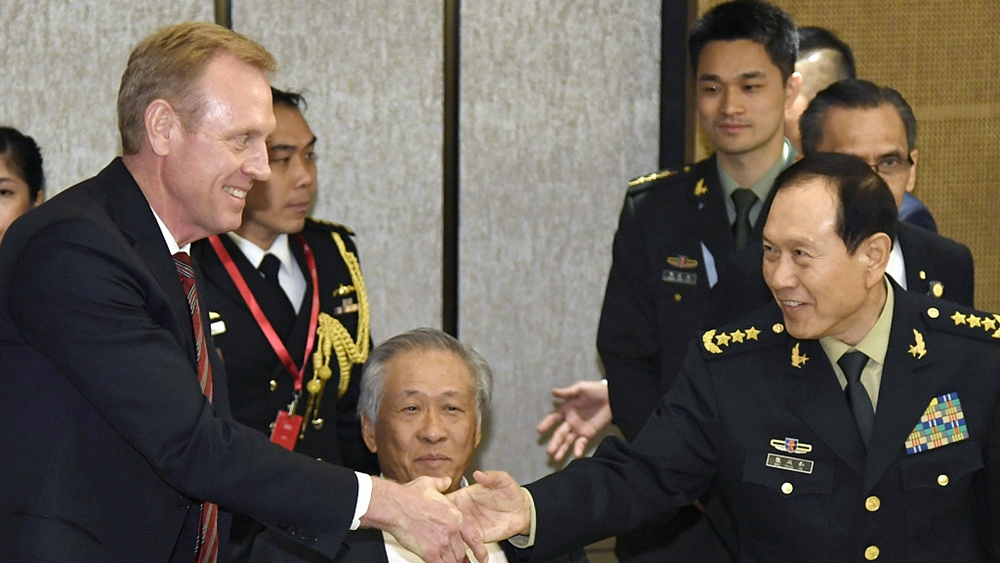
Asia Pacific
15:09, 06-Jun-2019
Key takeaways from the Asia Security Summit
Aliyah Sahni

The Asia Security Summit, better known as the IISS Shangri-La Dialogue, concluded in Singapore on Sunday.
Attended by defense ministers, top-ranking military officials and academics from the Asia-Pacific region, the discussions covered a range of issues including, the South China Sea, the Korean Peninsula and cybersecurity.
However, U.S.-China rivalry dominated the discussions and the headlines over the three-day summit.
The dialogue drew the attention of the world as China sent its State Councilor and Minister of National Defense General Wei Fenghe to articulate the country's position firmly to its regional partners.
"The most important thing is the participation of the Defense Minister from China. In the past years, we had a lot of discussion but the subject of the discussion, namely China, did not have a very high-level representative. So this year, with the Chinese Defense Minister here, we are able to listen to a much more authoritative voice,” Ong Keng Yong, executive deputy chairman of the S. Rajaratnam School of International Studies at Singapore's Nanyang Technological University, said.
It has been eight years since the Chinese minister of national defense addressed the Shangri-La Dialogue. His speech came a day after his American counterpart, Acting U.S. Secretary of Defense Patrick Shanahan, stated the U.S.' new vision for the Indo-Pacific region during the first plenary session.
Though neither leader said anything unexpected in their address, there was a significant difference in their tone and tenor.
Many observers saw General Wei Fenghe's speech as tough but nuanced. He took a clear and unequivocal stand on China's position on contentious issues like Taiwan, the South China Sea and the trade war.
Ong believes the two speeches gave the regional powers more clarity on where each country stands.
“There is more clarity. There is more understanding of each of the respective positions,” he said.
"The main takeaway from this year's dialogue is the United States and China continue to talk over each other regarding political, security and ideological matters. It is interesting that the views of both countries actually arrive at common ground more than they care to recognize,” said Dr. Graham Ong-Webb, adjunct fellow at the S. Rajaratnam School of International Studies.
The one thing that both speeches underlined was their openness to work toward military-to-military exchanges and to develop risk-reduction measures.
The dialogue also saw ASEAN nations highlight their concerns about the impact on smaller countries due to the rivalry between the two superpowers.
“Middle and smaller powers in Asia are demonstrating more level-headedness than the United States and China," Dr. Ong-Webb added. "The balance they bring to the table mitigates the likelihood of a U.S.-China military conflict, inadvertent or deliberate. Smaller countries must continue to speak up because any superpower conflict will consume us all.”
Referring to Singapore Prime Minister Lee Hsien Loong's keynote address, where he urged the U.S. and China not to ask smaller nations to take sides, Ambassador Ong added that the “prime minister from Singapore set the overall context in a very broad and strategic manner.”
“Basically he reminded everyone, you can talk, you can contest with each other but if at the end of the day you have no trust and you don't have a basic set of rules to work on, it is impossible to come to any positive conclusion,” he said.
Shawn Ho, an expert on the Korean Peninsula and an associate research fellow at the S. Rajaratnam School of International Studies, said he “expected more from the dialogue about the Korean Peninsular issue” and expected more “suggestions on how to move past the current stalemate in U.S.-DPRK dialogue and negotiations."
(Cover: U.S. Acting Secretary of Defense Patrick Shanahan (L) and Chinese Defense Minister Wei Fenghe meet at the IISS Shangri-La Dialogue in Singapore.)

SITEMAP
Copyright © 2018 CGTN. Beijing ICP prepared NO.16065310-3
Copyright © 2018 CGTN. Beijing ICP prepared NO.16065310-3